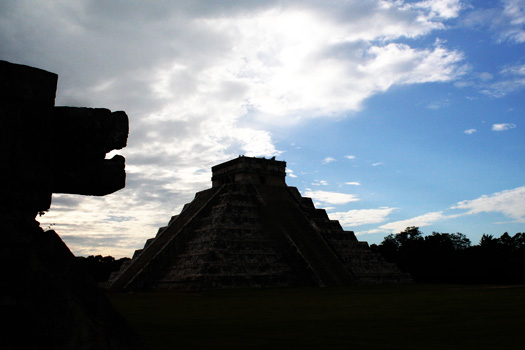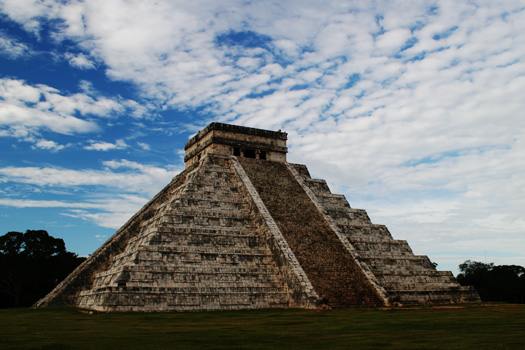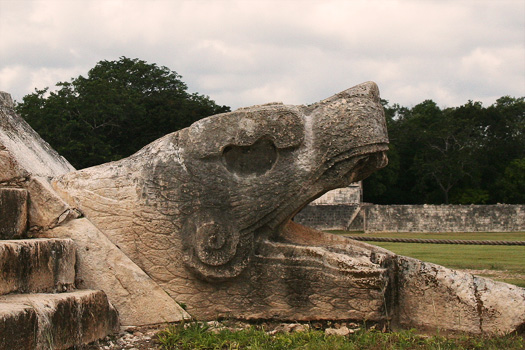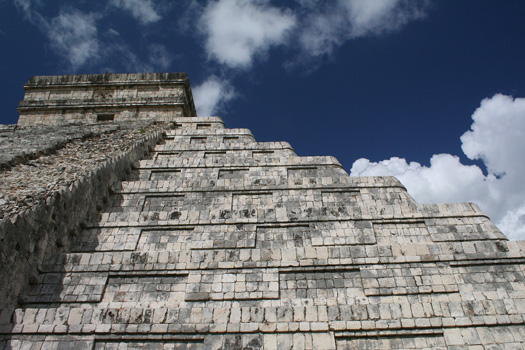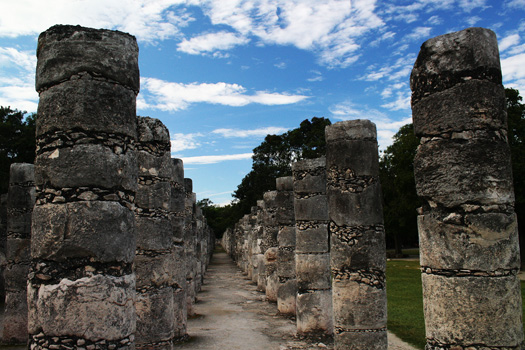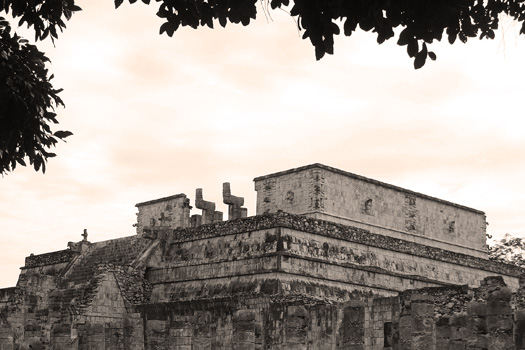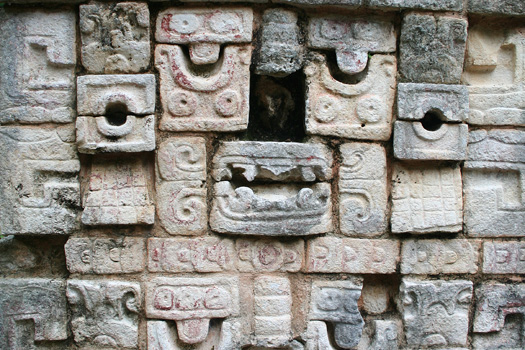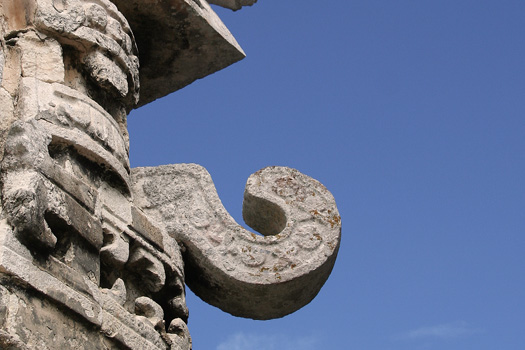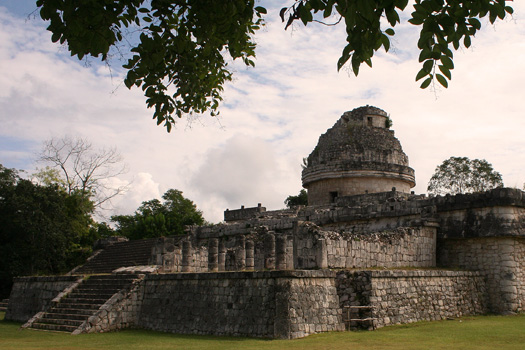2006 AD: The Maya ruins of Chichén Itzá, México
"En la boca del pozo de los Itzáes"
Although detailed inscriptions of ancient city life in Chichén Itzá were dutifully left by its Maya and Toltec population the relationship between these two people remains an intriguing matter of dispute. Whether the Toltec were war-mongering invaders simply suppressing the defeated Maya or rather peacefully coexisted after the establishment of long-lasting allegiances and subsequent immigration, the result was a unique cultural blend.
The foundations of the city state date back to the third or early fourth century and are typical in their regional Puuc and Chenes architecture. The remains of these buildings, including a large palace complex, are found in the southern half called Chichén Viejo, the 'old' town. It is here where the early Maya also build their astronomical observatory enabling them to precisely track the celestial bodies in all four cardinal directions. Painstakingly recording their movements over the centuries had by then already formed the basis of one of their greatest achievements; the Maya calendar. And it is this calendar that in turn dictated celebrations and rituals, and the start of maize planting and harvests.
Please browse to http://www.skylla.co.uk
if the map does not appear in a few seconds.
Nowhere does the Maya obsession with the regularity of time become more evident than in the structural design of the Kukulcán Pyramid in northern Chichén Nuevo. The ornaments and decorations are typical Toltec, but the layout follows the exact master plan of the original inner-pyramid build around AD 800. The 365 days of a solar year are represented by the number of steps leading up to the summit: four staircases of each 91 steps plus one extra at the very top leading into the temple. Fifty-two panels on each side depict the 52 year cycle of the Maya calendar. Furthermore, each of the 18 terraces symbolises one 20-day month which with the 5 supplementary days makes up the so-called Haab year. But most amazingly of all, at the biannual equinox the undulating body of a serpent, its feathered head sitting at the bottom of the main stairs, is revealed as a shadow cast upon the pyramid.
Published on 07.12.2006 by Sjaak van der Sar – Leave critique or other comments

